The Butterfly Mind A story on the Miiller Race cars By Doug Nye
All my life I have been cursed for having a butterfly mind. Something grabs my attention and I instinctively need to learn as much as I can about it. But halfway through that process something else might demand more attention, and ‘zap’ I find myself absolutely riveted by that different subject instead. Eventually projects demanding full attention do over-ride this basic mind-set, but it part explains why many of the histories that I have written have taken me far longer than might seem credible...like 16 years for Volume 1 of my BRM Saga…
Oh dear.
But “better right than published too soon” has become something of a war-cry. On balance, as the years roll by, we do most times get there in the end. Which brings me to our current state of play within the Revs Digital Library. While the resource is currently approaching 400,000 posted images, those of us involved in identifying and captioning them are closing-in on around 35,000 described in some detail, while more joined the Collections ready-captioned.
Now if you combine a butterfly mind with the Revs DigiLib resource, consider this for an otherwise idle evening’s half-hour trawl through. I was sitting here at home, Christmas-tree lights glittering to my right, ever-present cup of tea on my chair-side table, laptop…well…on my lap. I was reading the BBC News website, oozing sympathy for the poor unfortunates whose Christmas was being ruined in the north of my country (England) due to torrential rain and widespread flooding. There was some news film of a 200-year-old restaurant building which had collapsed into the torrent and been washed away – fortunately without a single injury to any occupant. It had been a water mill, and was now being swept downriver and out to sea in a million component parts…
Mill… – ‘Miller’ – Miller racing cars, my neurons inevitably sparked. You can take the fan out of racing cars, but you can’t take racing cars out of the fan. So Revs DigiLib is instantly dialed-up at https://revslib.stanford.edu and I find myself eagerly punching in ‘Miller’ to the search function.
And amongst the choice 673 so-far-captioned images to be offered are some wonderfully evocative shots of my favorite American marque. Like this Ted Wilson shot from an LA street side in 1931:
As sign-written on the truck cab’s door, this is Ernie Triplett’s Miller, and there stands the man himself, slim and limber on the left. Ernie Triplett was the superstar driver of the Ascot Speedway’s heyday, when what has been described as “that little oversize half-mile in Greater Los Angeles” was the hub of the racing world, and California the true ‘cradle of speed’.
Triplett – who was celebrated by the raucous local press of the period as the ‘Blond Terror’, or (from where he lived) as “The Belvedere Bad Boy” – proved almost unbeatable no matter the star-spangled national credentials of all visiting rivals. If any of them could beat Ernie Triplett the rest would gaze on in awe.
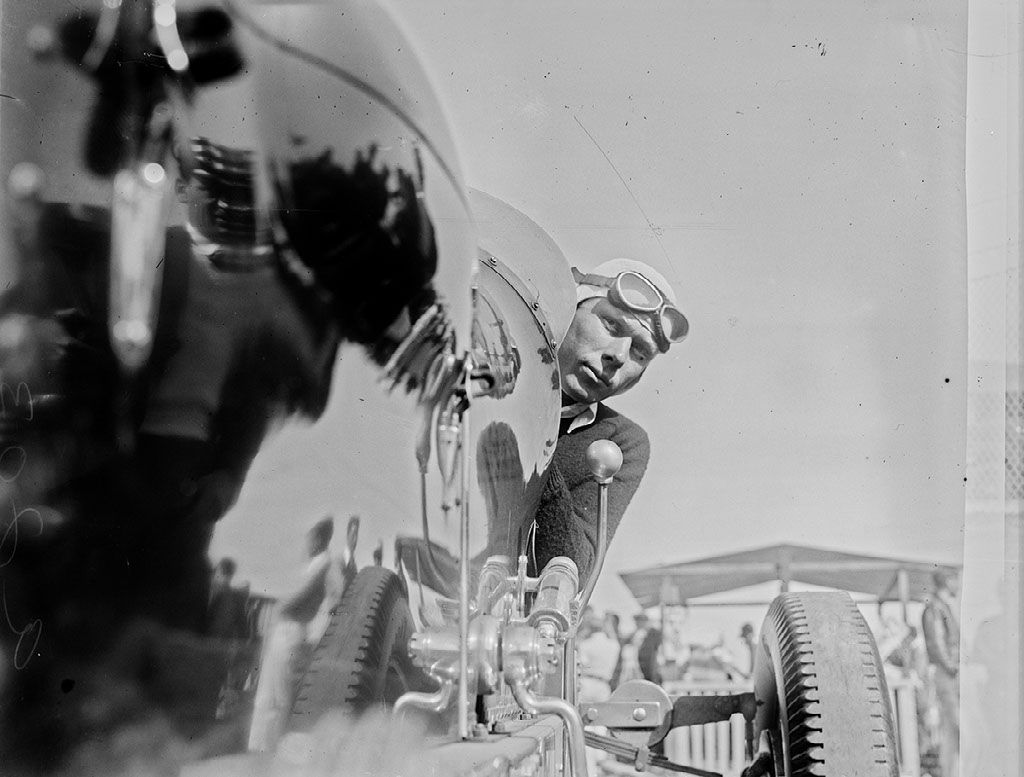
Once he had initially established himself in track racing, Triplett found backing from Texan oil man Allen Guiberson, and in a car prepared by roly-poly chief mechanic Harvey Ward, Triplett became a regular winner nationwide. Guiberson and Ward acquired a Miller Marine engine and built a new two-man racing car for the new Indianapolis formula. Triplett lost fourth place in the 500-Miles when the engine expired. He subsequently split from Guiberson and Ward – Guiberson going on post World War II to become a regular Ferrari sports car entrant, not least of driver Phil Hill.
During 1931, Legion Ascot Speedway – and indeed numerous other Pacific Coast raceways - saw Ernie Triplett winning no fewer than seventeen feature events. He ended-up driving for Hollywood car owner Bill White, his car prepared by star-mechanics Eddie Offutt and Dale Drake.
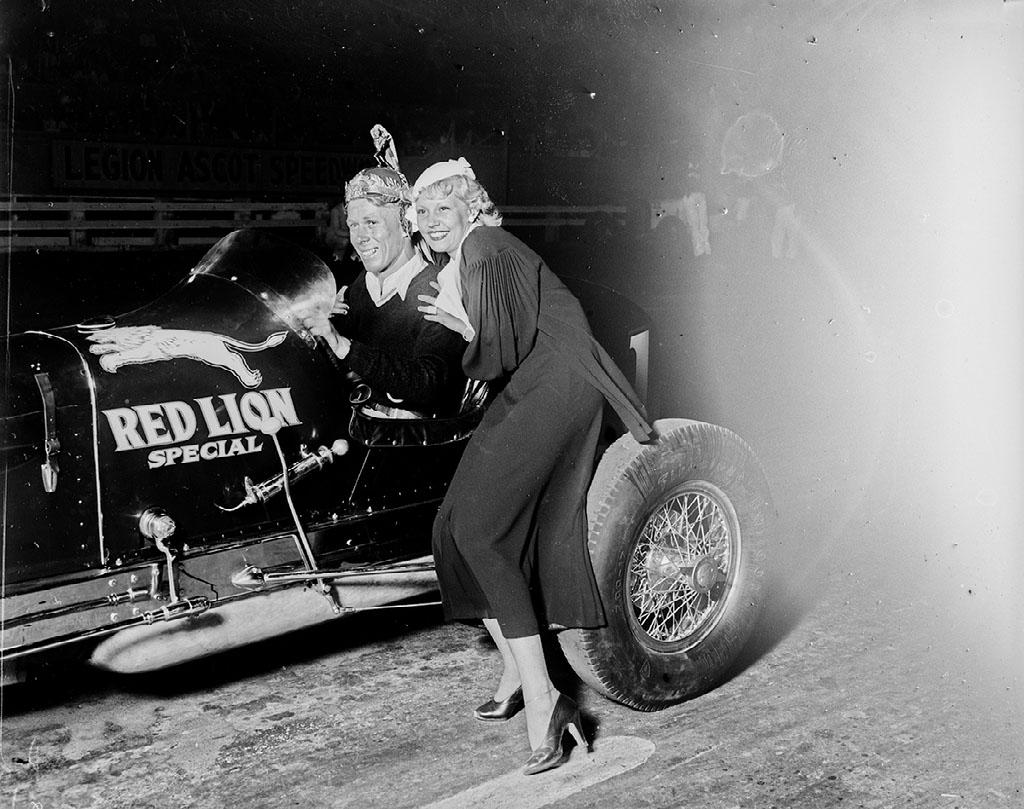
In 1932 he led the Indy ‘500’, breaking all records for the intermediate distances, but after his scheduled pit stop on lap 108, his car’s clutch began slipping, and ultimately sidelined him.
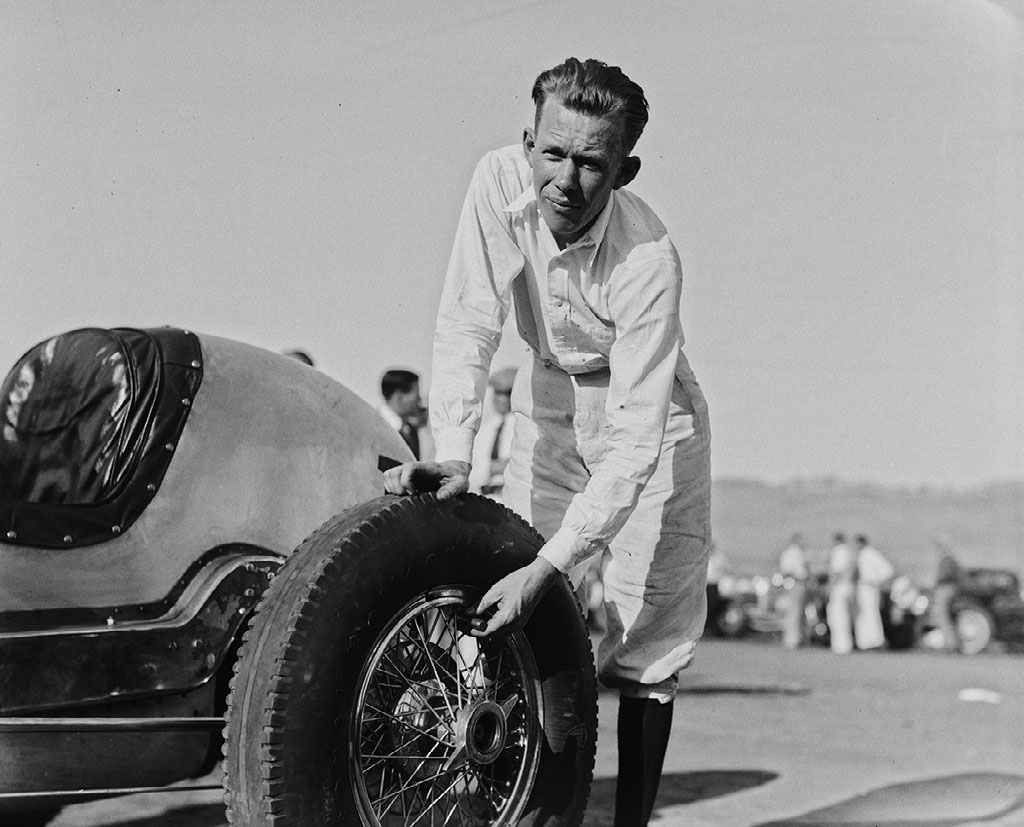
Into 1933 many regarded Ernie Triplett as America’s finest racing driver, with a newcomer named Bob Carey perhaps his greatest threat. But poor Carey was killed during the Indianapolis time trials, Triplett’s car again failed in the ‘500’ and he was then hurt in a crash back on the Pacific coast. Al Gordon became National Champion.
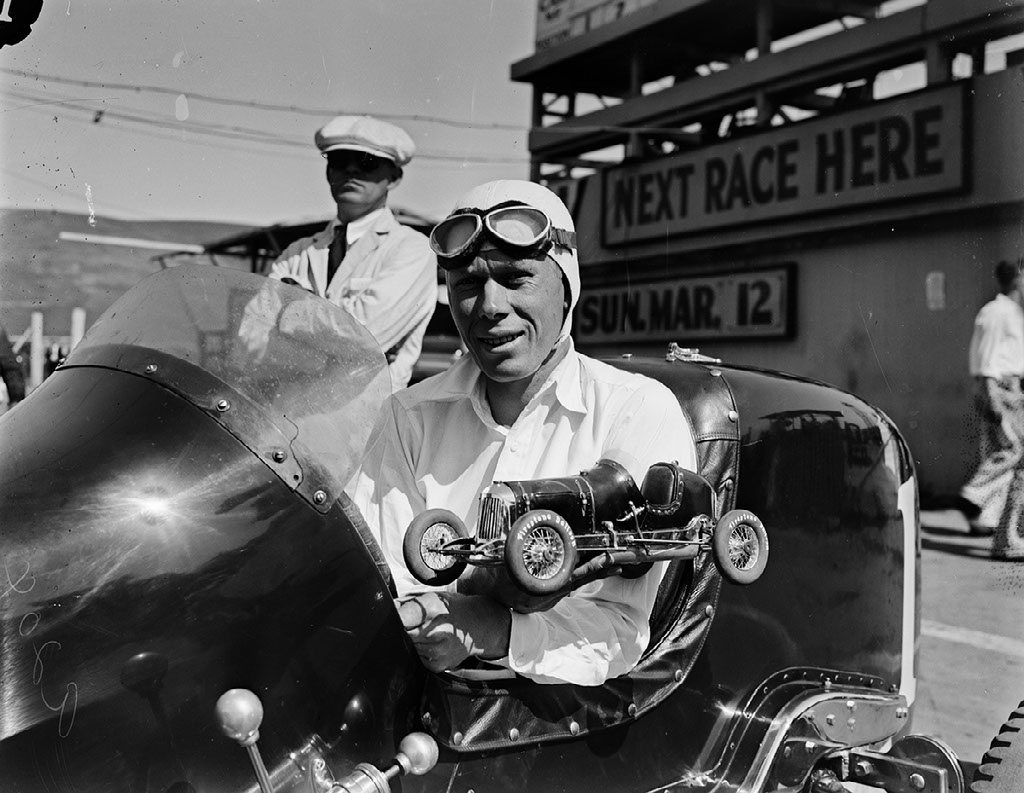
Triplett was quite seriously injured shortly after returning to Pacific Coast competition that July. Evidently an intense competitor, perhaps jaded after four jam-packed years of hectic, unrelenting racing – and increasingly troubled by repeated mechanical unreliability - Triplett retired from weekly Ascot competition – intending to concentrate upon Eastern racing. But on March 4, 1934 at the Imperial County Fairgrounds in El Centro he was duelling with new National Champion Al Gordon when – half-hidden by the pall of dust hanging over the dirt track – a stranded car confronted them. They tangled in frantic avoidance and somersaulted – Ernie Triplett was fatally injured…and the US had lost another of its greatest racing drivers.
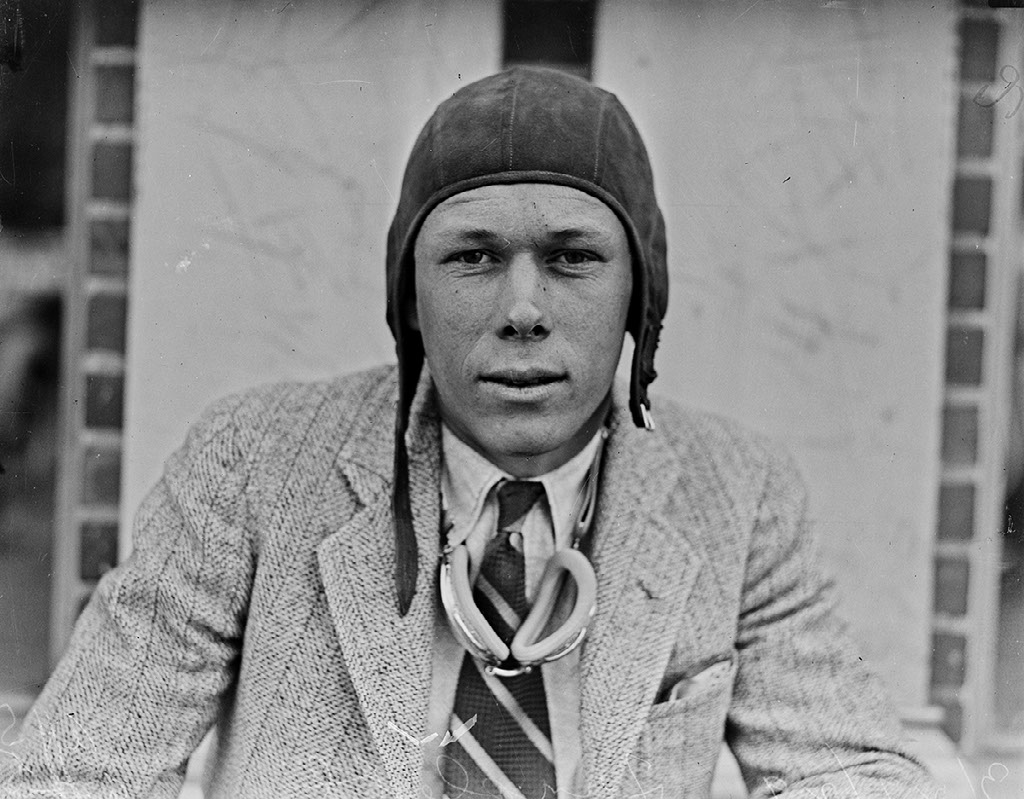
The Ernie Triplett truck in our photograph has ‘Bill Froelich Motor Co’ blazoned across its tailboard, and of course it was owners and sponsors such as this who sustained speedway racing at its most intense throughout the ‘tween-war years (and beyond). When it comes to the people behind racing how’s this for further treasure:
The twenty-five staff of Harry Amenius Miller’s race car factory pose in front of it in – again supposedly 1931 – with the master engineer himself wearing the fedora (left). This remarkable man’s remarkable manufacturing company produced not only the world’s finest dedicated racing cars but also the first to be produced in series entirely for customer sale. They were also lovingly hand-crafted and hand-finished to stunning standards directed and inculcated by Miller himself and most certainly his works manager Fred Offenhauser. Compare the workmanship on surviving Miller components today against contemporary work from the greatest of European factories – such as Bugatti and Alfa Romeo – and for once what Europeans regard as typical American hype is abundantly well justified. The racing Millers were engineering jewels, no question…
As evidence of this being the case, just enjoy this classic Ted Wilson shot, dated 1927 – Harry Miller, the man, with his waxed moustache, and with the centrifugal supercharger from one of his 81 cubic-inch racing engines; just eat your heart out Leonardo…
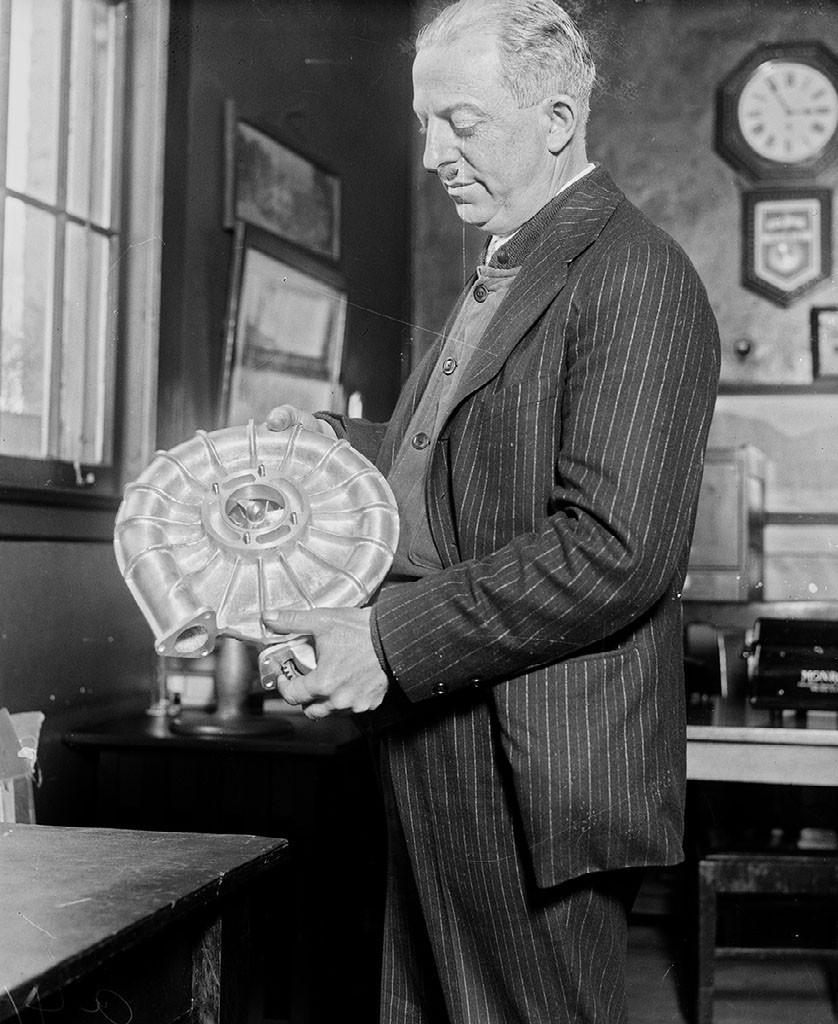
But while my butterfly mind is pausing upon Miller cars and Miller people, there is no way I could possibly omit mention of perhaps America’s greatest racing driver-cum-engineer of all time – Frank Lockhart. ‘The Boy’s record is just indelible. He soared through our world just briefly, born in 1903, killed attacking the World Land Speed Record on Daytona Beach in April 1928.He won the 1926 Indy ‘500’ for Miller as a 23-year-old stand-in rooky driver. After winning four more races that year he would be placed second in the 1926 National Championship standings. For 1927 he and the Weisel brothers added an intercooler to the Miller he bought from his winnings, and he qualified on pole at Indy and led 81 laps before his Miller’s engine failed. Here’s Frank Lockhart, first time out with his top-secret supercharger intercooler, at Culver City, 1927…
He ran his Miller 91 for fun (and money) on Muroc Dry Lake and clocked 171mph, threatening the outright Land Speed Record through science and with that tiny 1491cc engine. He also lapped the board speedway at Atlantic City at a stupendous 147.729mph in the tiny 81CID straight-8 supercharged Miller. It would not be until 1929 – two years later – that the Outer Circuit lap record at England’s fabled Brooklands track would be raised to 132.11mph by John Cobb’s V12 Delage and Kaye Don’s V12 Sunbeam.
Lockhart’s pace in the Miller on the Amatol track at Atlantic City had been 15mph faster with an engine just 37.5 per cent the size of the Sunbeam’s and a measly 14.3 per cent the size of the Delage’s. There’s clearly a moral in their somewhere – like ‘The Empire Strikes Back’? Which sets my butterfly mind fluttering on to ‘Star Wars’ – George Lucas – formerly crew chief on SCCA racer Allen Grant’s Cobra, helping project Allen into the Shelby American works team to beat Ferrari to the FIA’s GT World Championship title… But that’s another story, well covered within the Revs Digital Library.
D’you see what I mean – flutter, flutter?